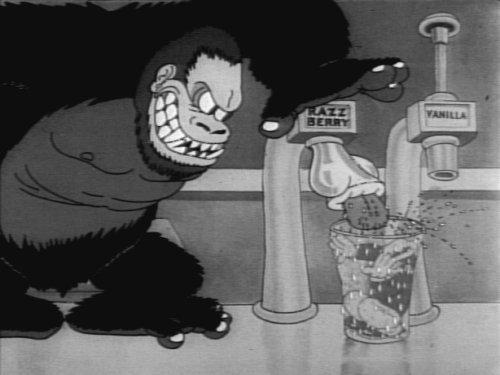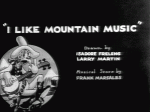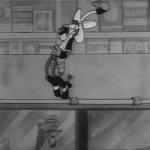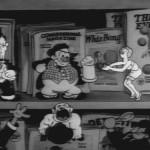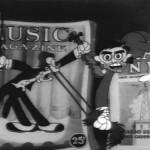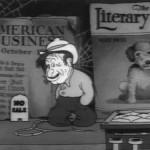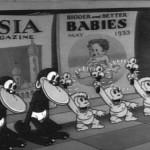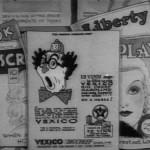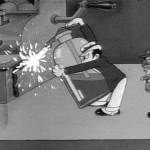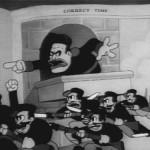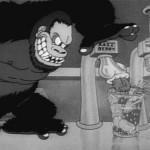Credits: Supervision by – Rudolf Ising Summary: Magazines come to life. Description: It’s the middle of the night at a magazine shop, and the characters within are springing to life. It all starts when a cowboy shoots his way out of Western Thriller and persuades his friends to begin playing the title song. The cowboy dances across the countertop and spins around. As he spins, his spurs cut a hole in the counter and he falls into a perfume display. He emerges transformed into an effeminate pansy — even his guns shout “rooty toot toot!”. One of the other cowboys rides his accordion like a bucking bronco, prompting a round of applause from all of the other magazine characters. The cowboys begin to harmonize on the title song now, with occasional interruptions from celebrities of the time. Ignacy Paderewski appears at a piano in front of the headline “They Laughed When I Sat Down to Play”. Eddie Cantor pulls the fake beard off a violinist and shouts “Look Jimmy, it’s Rubinoff!”. Will Rogers puts a “no sale” tag on a business magazine dated Oct. 1929, lamenting to the audience “All I know is what I read in the papers!”. After another round of applause from the tykes in Bigger and Better Babies, an ice skater leaps off of Dance Magazine and begins to skate on a mirror. One of the cowboys sprinkles talcum powder to create snow as the she skates. We watch as a trio of white babies shake bells in time with the music, while next to them two black babies flap their lips. At the end of the dance, all the toys on the cover of Toy Magazine applaud with delight. Next, an Hawaiian girl from a travel ad in National Geographic does a hula dance, followed by a Swiss native from Travel Magazine yodeling, and then a sexy co-ed from College Rumor joining the yodeler in a reprise of the title song. “Ed Vinn” makes a quick appearance as the “Vexaco Big Chief”, after which there is even more applause! Next, a gangster and his henchmen creep out of Crime Stories, unaware that they are being pursued by Sherlock Holmes and Mr. Watson from Detective Thriller. The ingenious gangster creates a flame thrower from lighter fluid, a spray bottle, and a match, and uses it to break open the cash register. As they shovel the money out with a spoon, Edward G. Robinson comes out of Movie Magazine and shouts “They can dish it out, but they can’t take it”, then pulls out his guns and starts shooting at the criminals. The gangsters shoot back with a machine gun, but soon all of the other magazines come to life in order to stop them. A fleet of police cars zoom out of Police Gazette, a group of Italian troops follow Mussolini’s order to attack, sailors use a typewriter to shoot gumballs at them, and pins are shot out of a pencil sharpener and into their rears. The head gangster tries to hide in Screen Play, but finds the giant ape Ping Pong inside! The ape chases the gangster into a soda glass, where he then gives him some “Razz Berries” from the tap. Applause breaks out yet again, as the cartoon comes to an end. Notes:
Memorable Scenes: Video Availability: Laserdisc: Golden Age of Looney Tunes, Vol. 5
|
